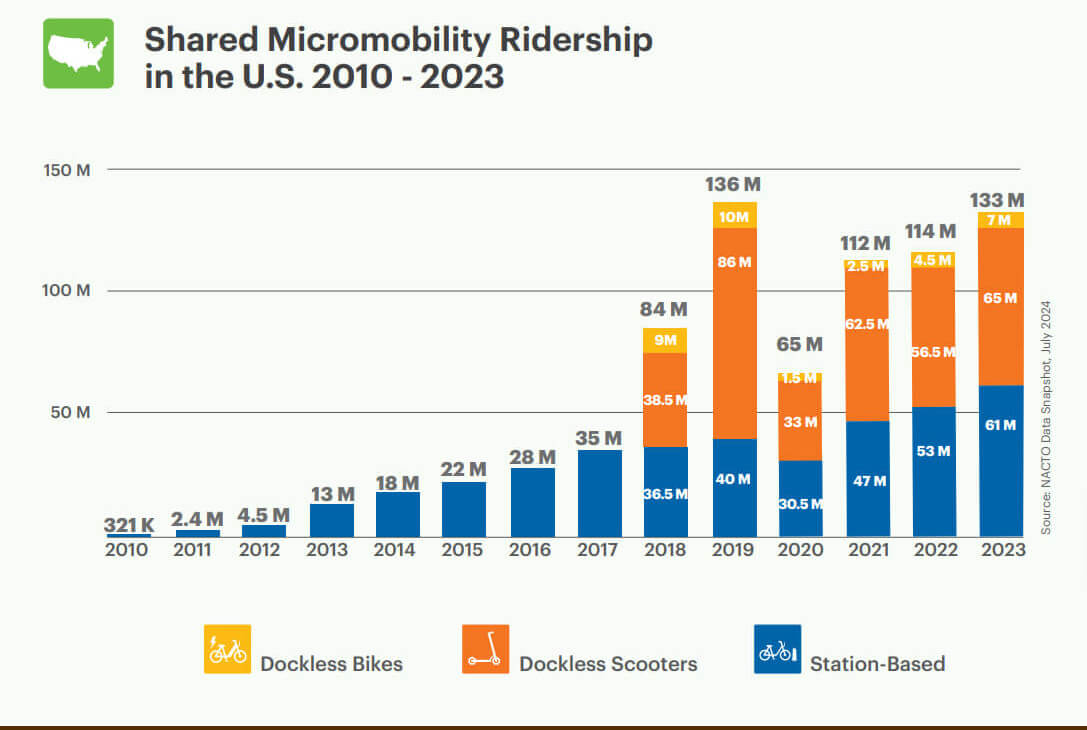The Rise of Micromobility: How Shared Electric Scooters and Bikes are Changing Cities
Micromobility, shared electric scooters and bikes, is a growing trend in our cities. It is reshaping public transportation, enhancing accessibility, and promoting sustainability. Learn about the rise of e-bikes, the surge in usage, and the future of urban commuting.
Stephen Smith
Last updated Apr 15, 2025

These vehicles can be dockless, meaning you can pick them up and drop them off pretty much anywhere, or station-based, where you have designated docking areas. The beauty of micromobility lies in its ability to complement public transportation, extending its reach and ensuring you can easily reach your destination.
Micromobility Industry Growth
The micromobility trend is not just a fad—it’s a rapidly growing industry. In 2023, micromobility trips surged by an impressive 16%, with electric bike usage leading the charge in major cities.
Here’s a Quick Look at the Stats:
- Dockless E-Scooter Trips: 65 million in 2023 (up from 56.5 million in 2022)
- Station-Based Bike Trips: 61 million, with a significant rise in e-bike usage
- E-Bike Growth: E-bikes accounted for 46% of all station-based bike trips!
- Top Cities for Dockless E-Scooter Trips: Los Angeles, Washington, DC, Denver, Seattle, and more!

The Popularity of E-Bikes
Why are E-bike trips on the rise? They offer a way to ride longer distances without breaking a sweat. In cities like New York, e-bikes now make up 25% of the entire bike fleet, and users are riding them nearly four times more than regular pedal bikes. In Los Angeles, e-bike trips nearly tripled, going from just 87,000 in 2022 to 232,000 in 2023.
And don’t forget—these e-bikes can often be found in station-based systems, where they’ve made a significant impact. With a 40% increase in e-bike trips, the trend is pointing toward a more electrified biking future.
Membership: Cost and Accessibility
Notably, the cost of shared micromobility options is rising also. Over the last five years, annual pass prices have spiked, climbing more than 30% in cities like Boston and over $200 in NYC. While it may take a chunk out of your budget, many people still find it more cost-effective than other options such as owning a car when factoring in gas, parking, and maintenance—so it might still be worth it.
The Road Ahead for Micromobility
As the micromobility trend rolls forward, business owners, city planners, and average citizens should take note of its implications. Whether commuting to work, heading out for groceries, or just taking a leisurely ride, this growing trend offers a sustainable path to travel around our cities more efficiently. With the industry growth expected to continue, be ready to embrace the changes ahead. So, next time you see an electric scooter or bike whizzing by, remember that you’re witnessing an evolving trend in urban transportation.
Source: National Association of City Transportation Officials